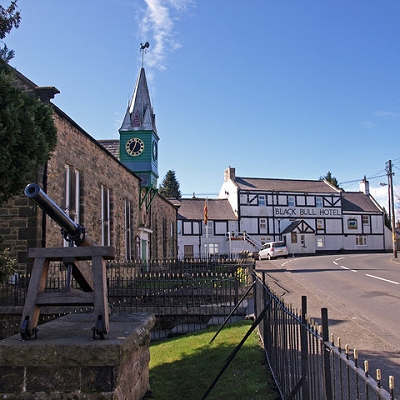
Like us on Facebook
PLACE NAMES


 
|
|
Bellingham
|

|
|
|
The parish of Bellingham lies in western Northumberland north of Hadrian’s Wall. It stretches from high moorland in the north, across the River North Tyne, to the edge of Wark Forest in the south. The principal settlement is the town of Bellingham which sits on the north bank of the river. The uplands appear little explored, with few known archaeological remains when compared with other similar landscapes. The earliest evidence we have for human activity is mainly represented by finds, such as stone and bronze axes, and cup and ring marked stones, from the Neolithic and Bronze Age. The settlements and burial sites of the people who made these implements have not yet been found, with the exception of a single burial cairn.
It is only in the Roman period that the first settlements are found and they are located on the valley sides. These consist of small enclosed farmsteads containing round houses and some have associated field systems. The fields are marked by long stony banks and, in one example, even the traces of earlier prehistoric ploughing can be seen as a series of narrow ridges known as cord rig.
Like many parts of Northumberland, there is a gap in our knowledge about the early medieval period in Bellingham. However, there are hints of an early medieval origin to the town of Bellingham in its name, ending as it does with 'ham'.
It is only after the Norman Conquest that we can recognise remains of the past in the parish again. Bellingham was part of the medieval lordship of Tynedale, a vast area of land held by the kings of Scotland, which did not become fully part of Northumberland until the late 15th century. Bellingham was one of only a handful of villages in the parish, including Ealingham and High Town and may have developed as a larger settlement because of the castle or church. It acted as a local centre for the area, holding a weekly market.
The troubled nature of the Border region through the medieval period, with countless raids and skirmishes, is reflected in the presence of a number of tower houses, for example Hesleyside. Later, bastles were built to protect farming families and their livestock from the continued threat to their lives and livelihood, including Hole, Lower Stobbylee, The Riding and East Ealingham.
Buildings such as Hesleyside Hall and Lee Hall show the growing confidence of the area in the late 17th and early 18th centuries as the Border region became more peaceful. Wealthy families who had lived in the area since medieval times made large investments in non-defensive homes and surrounding parkland, for example at Hesleyside where a landscape park was created in the later 18th century.
Bellingham developed its role as a market town serving outlying farms and settlements. As well as agriculture, other economic activities included the Hareshaw Ironworks founded in the early 19th century, a bottle works, ironstone mines, and a tile works. The ironworks heralded a short period of growth in Bellingham which was followed a decade later by a sharp decline when the works closed. Today the parish is still largely rural in character with a small market town that is a gateway for tourists travelling to Kielder Water.
|
 Feel free to Email me any additions or corrections Feel free to Email me any additions or corrections
LINKS AVAILABLE TO YOUR SITE
| |





